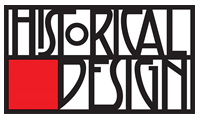Product Description
American Folk Art, Pine Tree and Shaker Style House andirons c. 1920’s


MASSACHUSETTS IRON WORKS Saugus area
Pine Tree and Shaker Style House andirons c. 1920’s
Cast and hand finished iron with a natural black/brown patina.
H: 22 1/2″ x W: 20 1/2″ x D: 16″
This pair of extraordinary andirons are a unique expression of American Folk Art at it’s best. The tall tree form resembles a towering carved wood version of a pine tree in 1 1/2″ thick cast iron and the Shaker Style house with a classic pitched roof and chimney has four “windows” that light up when the fire is roaring from behind. These are a substantial and gutsy design and are a very rare find in the world of Americana.
American Folk Art, Pine Tree and Shaker Style House andirons c. 1920’s
NIGEL COATES (b. 1949) England
BRANSON COATES ARCHITECTURE London
“Genie” stool 1988
Carved and sandblasted solid ash seat on twisted mild steel legs
Marks: NIGEL COATES GENIE STOOL
Illustrated: 1000 chairs, Charlotte & Peter Fiell (Cologne: Taschen Verlag, 1997), p. 615.
H: 26: x D: 13 1/2″
Price: $9,500
British architect and designer. He studied at Nottingham University and the Architectural Association, London, where he graduated in 1974 and subsequently taught until 1989. In 1983 he formed the group NATO (Narrative Architecture Today) with a group of former students and began to practice independently; two years later he went into partnership with Doug Branson (b 1951). Coates became known for his fluid and lively graphic style and the overt theatricality of his designs. His proposals for the redevelopment of London, involving sophisticated allegories of popular culture, were shown in two exhibitions: ArkAlbion (1984), with drawings of new development areas such as County Hall and the Isle of Dogs, and Ecstacity (1992), with computer simulations and video clips. In the renovation (1980) of his own flat in London he juxtaposed the original, ornate late 19th-century interior with ‘found’ furniture and decorative objects. The publication of this project brought Coates to the attention of Japanese clients who were seeking fashionable Western designers, and he carried out several projects in Japan that became increasingly theatrical: in Tokyo the Metropole Restaurant (1985) evokes a European café, while the Parco Café Bongo (1986) juxtaposes classical English furniture with an imitation aeroplane wing mounted on the ceiling; and the Arca di Noè (1988), Sapporo, is an eclectic mixture of classical motifs and a concrete boat. Coates’s radical approach was dissipated in later British works, such as a series of London shops: one for Katharine Hamnett in Sloane Street (1988) has a shop front formed of aquaria, and one for Jigsaw in Knightsbridge (1992) has its shop front formed of a two-storey copper column in the shape of a phallus. In 1992 he began designing an extension to the Geffrye Museum, London.
Coates was an influential teacher at the Architectural Association from 78- 86, and has lectured extensively abroad. In 1995 he was appointed Professor of Architectural Design at the Royal College of Art and now divides his time equally between the college and his office. Nigel Coates furniture is represented in the Modern Furniture Collection of the Victoria & Albert Museum, London.
“I go for architecture that overlays and enhances. By blending observation and wit with reason, I want my work to generate a sense of the unexpected, and the seemingly spontaneous.”
SARA SAX (1870-1949)
ROOKWOOD POTTERY Cincinnati, OH
“Poppy” pitcher 1906
High fire ceramic with “Iris” glaze depicting five salmon pink poppies in various stages of blooming all on a rare handled pitcher form.
Marks: RP insignia, VI (1906), SAX (intertwined for Sara Sax), 772
For more information on Rookwood see: The Book of Rookwood Pottery, Herbert Peck (New York: Bonanza, 1968) pp. 60, 63, 64, 112, 140, 146, & 156 ; American Ceramics: The Collection of Everson Museum of Art, ed. Barbara Perry (New York: Rizzoli International Publications, Inc., 1989) p.108.
H: 8 1/4″ x Dia: 4 1/2″
